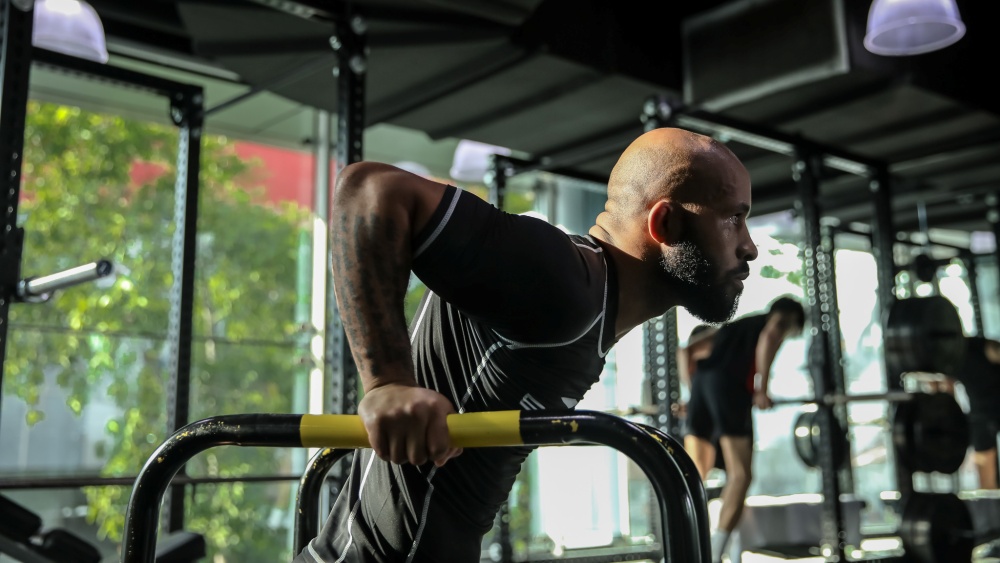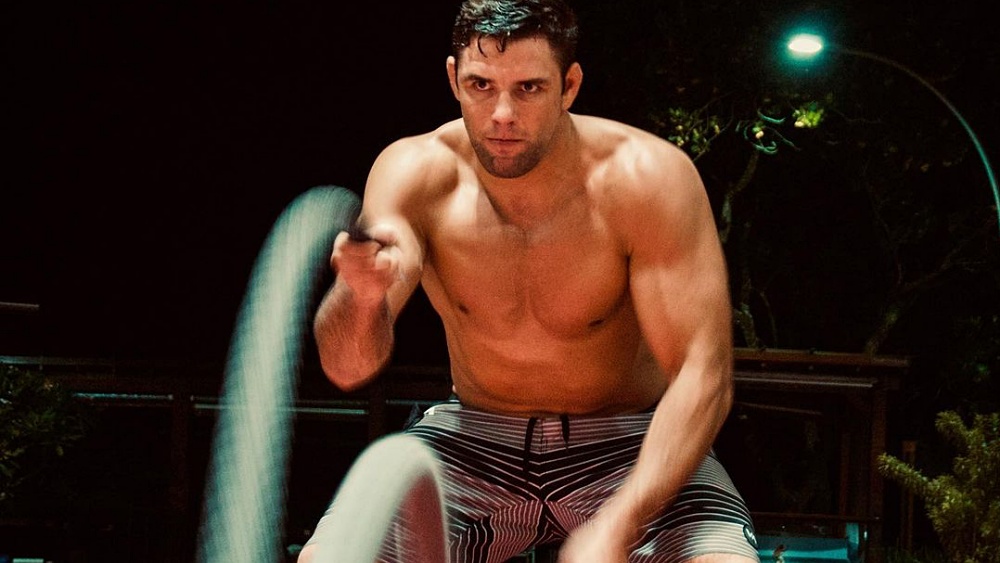Developed, well-defined calves are one of the main components of balancing your lower body muscles. However, the muscles in your calves are one of the most challenging muscle groups for people to build up. Some lucky people have the right genetics that naturally gets them developed calf muscles, but most have to work extremely hard to develop aesthetically-pleasing calves.
If you don’t want to have a pair of chicken legs, you’ll need to dedicate a portion of your workouts to build up your calves. Do it consistently, and you’ll overcome any genetic limitations you might have.
Your calf muscles are located on the posterior of your lower leg. It is made up of two muscles: the soleus and the gastrocnemius. The latter is the bulkier part of the calf and attaches to the femur via two origins. The gastrocnemius plays a vital role in knee flexion and plantar flexion of the foot.
The soleus is the smaller of the two muscles and runs along the upper portion of the backside of the fibula and the soleal line. It’s also activated during plantar flexion. Both muscles play essential roles as you stand upright, walk, run, or jump. Building more muscular calves doesn’t just improve the appearance of your lower body; it improves your mobility and ability to perform athletic movements.
Ten Best Exercises For Building Bigger, More Defined Calf Muscles
There are many different philosophies regarding building muscle mass in your calves, but the consensus is to train them multiple times a week. Muscles in your legs are more resilient than muscles in your upper body since they have to carry your weight as you move about during the day.
You’ll need to force your calves to work a lot harder than they’re used to so they grow. Aim for somewhere between 12 to 20 reps when working on your calves, and keep breaks between sets to about 30 seconds. You’ll need to train your calves multiple times weekly to get consistent growth, so consider adding calf exercises to all your workout sessions.
Ready to transform the way your calves look? Here are ten exercises that will make them bigger:
1) Standing Calf Raise
Standing calf raises are one of the oldest ways to work your calf muscles. The exercise is also the easiest way to work your calves since it requires no equipment. It targets mainly the soleus (the smaller muscle in your calves).
Here’s what the exercise looks like:
- Stand upright with your feet hip-width apart. Keep them facing forward and bend your knees slightly. Keep your arms down by your sides.
- Lift your heels off the ground by pushing the balls of your feet off the ground. Push until you’re standing only on your toes. Hold the position for a second and lower your heels back to the ground.
- Perform about three to five sets of as many reps as possible. Limit your breaks between sets to less than 30 seconds.
2) Dumbbell Calf Raise
You can make calf raises more challenging by holding a dumbbell in each hand. Kettlebells are just as good for this exercise. Here’s what it looks like:
- Stand upright with dumbbells or kettlebells in each hand. Keep your hands down and by your side.
- Raise your heels off the ground by pressing your toes into the ground. Keep going until you’re standing on your toes.
- Pause at the top and slowly return to the starting position. Aim for 12 to 20 reps. If you can do more than that, use heavier dumbbells.
3) Barbell Calf Raises
This exercise allows you to go as heavy as you want when performing calf raises. You’ll need a barbell and squat rack to perform it.
To perform a barbell raise:
- Set a barbell at the same level you use for squats, so it’s slightly lower than your height. Load up as many weights as you can handle.
- Step under the barbell and position it on your upper back the same way you would when performing squats.
- While holding on to the bar with both hands, pick it off the rack and take a few steps back.
- Straighten your body and keep your feet about shoulder-width apart to get into the starting position. Keep your knees slightly bent in this position.
- Raise your heels off the ground by pushing your toes into the ground and keep going until you’re standing on your toes. Hold the position for a second before lowering your heels back to the ground to complete a rep.
4) Elevated Calf Raises
Once standard calf raises become too easy for you, it’s time to make them more challenging by doing them on an elevated platform like the step-aerobics box. This gives you a wider range of motion, so you get to work a more significant portion of your calves while giving them a nice stretch. Elevated calf raises also help to increase the flexibility of the ankle joint.
You can perform all the exercises listed above on an elevated surface to get the same benefits. Here’s what the exercise looks like:
- Stand on the platform’s edge with your legs a little more than shoulder-width apart. The balls of your feet should be firmly on the platform while your heels hang off it.
- The starting position might feel a bit wobbly to you if you’re new to elevated calf raises, so use your hands to hold on to something like a squat rack or wall to maintain your balance.
- Lift your heels by pressing the balls of your feet into the platform. Keep raising your heel until you feel your calf muscles stretch. Hold the position for a second and lower your heels to complete a rep.
5) Single-Leg Calf Raises
Single-leg calf raises can be performed using your body weight, a dumbbell, or a kettlebell. Single-leg raises are more intense on your calves than variations involving both legs. Staying balanced while performing the exercise can be challenging for some people, so perform it near something sturdy you can grab onto to maintain your balance.
Unilateral exercises like single-leg calf raises force both sides of your body to do the same amount of work, helping to prevent muscle imbalances. The dominant side of your body often does more work when performing bilateral movements.
Single-leg calf raises can be performed on flat or elevated surfaces. Here’s what the exercise looks like:
- Get into the starting position standing on one leg with the other leg behind you. Keep your foot on the ground or platform, pointing forward.
- You can hold on to a dumbbell or kettlebell with one hand and use the other to maintain your balance.
- Push your toes into the ground and raise your heels until you’re standing on your toes. Pause for a moment and return to the starting position to complete a rep.
6) Donkey Calf Raises
This exercise stretches and engages your calf muscles more than standard calf raises. Your body weight is all the resistance you need when you’re new to the exercise, but you can wear a weight belt to add more resistance as your muscles grow.
You’ll need something sturdy to step on to elevate your heels off the ground and something sturdy you can lean on. Weight plates or aerobic steps are good choices for your feet, while you can lean on a plyo box. If you don’t have one of those laying around, find any surface that’s about waist-high and sturdy.
Here’s what the exercise looks like:
- Stand on the elevated platform on the balls of your feet while facing the plyo box. Keep your heels hanging off the edge of the platform.
- Bend at your waist and extend your arms, so you’re leaning on the plyo box.
- Raise your heels until you feel your calf muscles stretching. Slowly lower your heels to complete a rep.
This exercise gives your calves an intense workout, so aim for eight to twelve reps. Use a weight belt to make the exercise more challenging if you can pump out more than twelve reps.
7) Bent-Knee Calf Raises
Here’s an excellent exercise that targets your gastrocnemius (the larger muscle in your calf). This part of the calves isn’t mainly made up of slow twitch fibers, as is the case with the soleus, so you don’t need as many reps to give them a thorough workout.
You can grab dumbbells, kettlebells, or a barbell to make the exercise more challenging. To perform the movement:
- Stand up straight with your feet about hip-width apart and your feet facing forward.
- Bend your knees to get your body into a partial squat. This is the starting position for the exercise, and it’s what activates your gastrocnemius muscles.
- Raise your heels off the ground by pushing the balls of your feet into the ground. Maintain the partial squat position the entire time.
- Keep going until you feel a nice stretch in your calves, and slowly return to the starting position. Aim for eight to twelve reps when performing this exercise. Add weight to the exercise once you can get more than 12 reps.
8) Box Jumps
Box jumps are a simple plyometrics exercise that builds and tones your calf muscles, especially the gastrocnemius. If you’re new to the exercise, stick to a shorter box until your calf muscles become stronger and your ability to jump on taller boxes increases.
Here’s how you do box jumps:
- Stand in front of an exercise box with your feet about shoulder-width apart and your knees slightly bent.
- Keep your feet facing the box and drop your hips back to drop into a squat position while swinging your arms backward to propel you into your jump.
- Land on the top of the box with a slight bend in your knees.
- Step backward off the bench to complete a rep and repeat as many times as you can.
9) Seated Dumbbell Calf Raises
Here’s one of the best ways to engage your gastrocnemius muscles since your knees are bent during the movement. You’ll need an exercise bench or something similarly sturdy to perform it and a pair of dumbbells. You can also perform the exercise with your feet on an elevated platform while sitting to give your muscles even more of a stretch.
Here’s what the exercise looks like:
- Sit on an exercise bench with your feet on an elevated surface or flat on the ground
- Keep your knees directly over your feet and lead forward slightly. Grab a pair of dumbbells and place them on your knees. You can also place your hands directly on your knees if you prefer to perform the bodyweight variation of the exercise.
- Raise your heels by pressing down on the balls of your feet. Keep going until you feel a nice stretch in your calves.
- Slowly lower your heels to the starting position to complete a rep. Aim for about eight to twelve reps when performing this exercise. If you can get more than that, use the seated dumbbell calf raises machine to load up heavy weights.
10) Farmer’s Carry Toe Variation
The farmer’s carry is an effective strength and conditioning exercise that engages most muscles in your body. It particularly engages your traps, lats, forearms, and hand muscles that control your grip, but you can force your calves to do more work by performing the exercise on your toes.
You’ll need a pair of dumbbells or kettlebells to perform the exercise. Don’t worry if they don’t weigh the same; that actually makes the exercise more effective as it forces your obliques and other stabilizer muscles to do more work.
Here’s how to perform this variation of the farmer’s carry:
- Find an open space where you can take at least 15 steps in a straight line.
- Place the kettlebells or dumbbells on both sides of your body.
- Bend at your knees and hips as you reach down to grab the weights. Deadlift the weights, so you’re standing upright.
- Roll your shoulders back, tighten your core, and stand tall on your toes. Keep the dumbbells on your sides as you start walking forward on your toes. Keep your head pointing straight ahead while walking.
- Complete the desired number of steps, drop the weights, and rest for about a minute. If you’re using different-sized weights, switch hands and walk back to the starting position to complete a set.
You may also like:

















